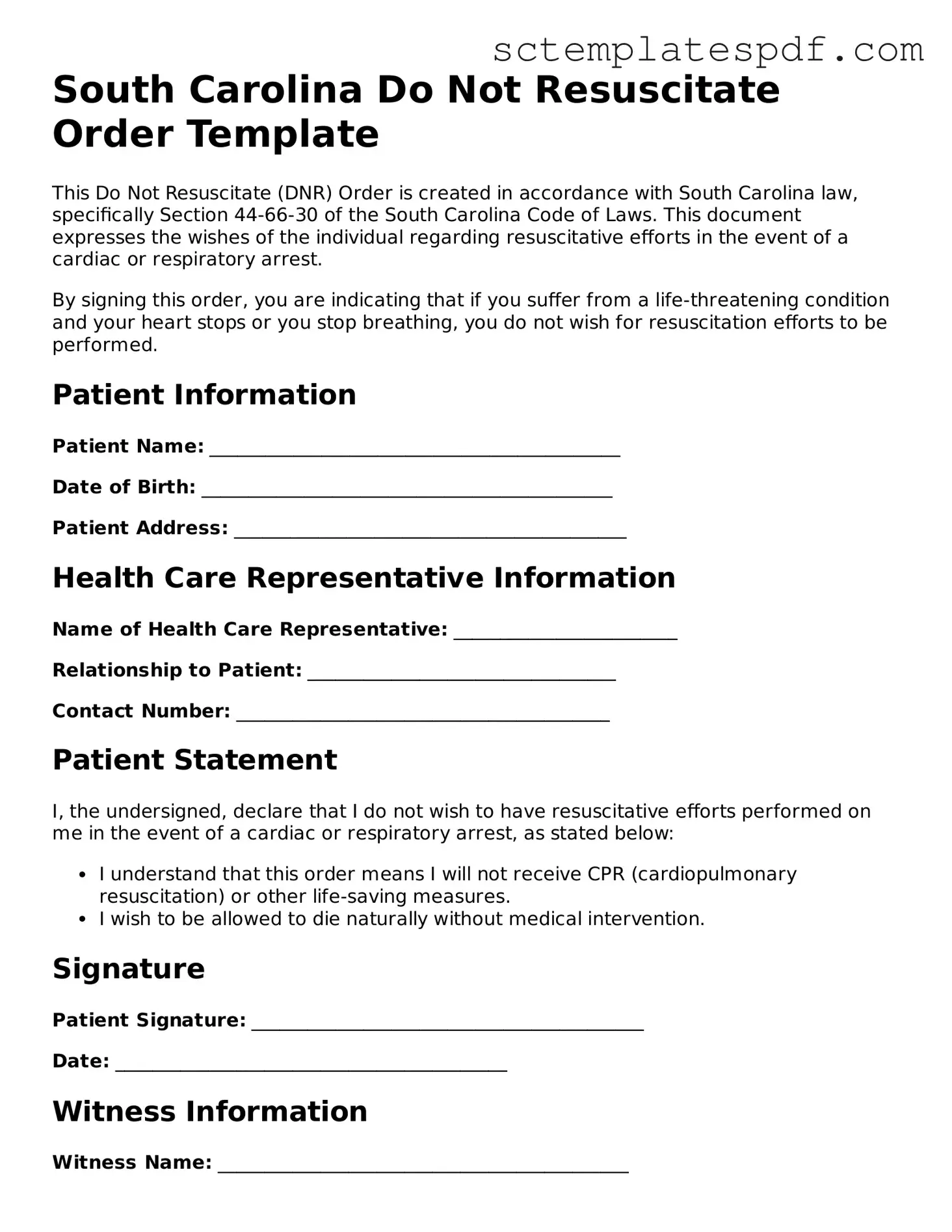In South Carolina, the Do Not Resuscitate (DNR) Order form serves as a crucial legal document that allows individuals to express their wishes regarding medical treatment in emergency situations. This form is particularly significant for patients who wish to avoid resuscitation efforts, such as cardiopulmonary resuscitation (CPR), in the event of a cardiac arrest or respiratory failure. It is designed to ensure that healthcare providers respect the patient’s preferences when it comes to life-sustaining measures. The DNR Order must be completed and signed by the patient, or their authorized representative, and it requires the signature of a physician to be valid. This ensures that the decision is not only informed but also supported by medical expertise. Additionally, the form must be readily accessible to medical personnel, as it needs to be presented during emergencies to guide the appropriate response. By understanding the implications and requirements of the DNR Order, individuals can make informed choices that align with their values and beliefs about end-of-life care.
